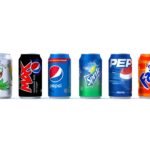The answer is most definitely YES!
The obesity rate for adults 20 years and older in the US is around 73%, one of the highest in the world (“FastStats,” 2024).
Oversized portions, high-calorie fast food, and processed foods contribute to this epidemic (Young & Nestle, 2002).
Portion control is one of the most effective strategies for:
- maintaining a healthy weight,
- preventing overeating and
- ensuring balanced nutrition.
However, in the United States, where restaurant servings are oversized, and buffet options are unlimited, it can be hard to recognize a healthy portion.
Portion Control Matters
Some of these are just common-sense facts about smaller portion sizes:
- Prevents Overeating – Eating large portions can lead to excessive calorie intake, increasing the risk of weight gain and obesity (Capra et al., 2024).
- Aids Digestion – Overloading the digestive system can cause discomfort, bloating, and sluggishness.
- Balances Nutrition – Proper portions ensure we consume the right protein, carbs, and fat balance.
- Saves Money—Eating reasonable portions makes our groceries last longer, and we are less likely to waste food.
Portion Sizes in the US vs. the Rest of the World
Portion sizes in the United States are significantly larger than in other parts of the world.
Restaurant meals often contain double or even triple the portions served in European and Asian countries.
Let’s look at some examples:
Fast Food – A standard burger meal in the US is often much larger than its counterpart in Japan or France, where portions are smaller.
For example, a McDonald’s Big Mac meal in the US comes with a 16-ounce soda and large fries, while in France, the standard meal includes a 12-ounce drink and small fries. There are also no free refills in Europe.
Soft Drinks – American soda servings can be 32 ounces or more, whereas, in many European countries, a small soda is around 8-12 ounces.
Restaurant Entrees—Meals in the US often include large portions of meat and starches, whereas other countries prioritize smaller plates with more balanced ingredient distribution.
Due to its large portion, a typical pasta dish in the US may contain over 1,000 calories, while in Italy, a pasta serving is more modest, averaging around 400-500 calories.
Packaged Foods – Snack packages in the US are often bigger, encouraging greater consumption per sitting compared to the single-serve portions found in many other nations.
Snacks—A typical bag of chips in the US is often 7-11 ounces, whereas in Europe, snack bags are usually 2-3 ounces.
Similarly, a standard American chocolate bar may weigh 2-3 ounces, while European versions tend to weigh closer to 1 ounce.
Ice cream servings in the US are often double or triple the size of their European counterparts. A single scoop in the US is significantly larger than in places like Italy, where gelato servings are more moderate.
Cultural differences in eating habits also play a role.
Many countries emphasize fresh, whole foods and smaller meals throughout the day, while the US often promotes value-size meals and all-you-can-eat options.
How to Easily Measure Portions
Understanding portion sizes doesn’t have to be complicated. Here are a few simple ways to measure portions without a scale:
Using Your Hand as a Guide:
Protein (meat, fish, tofu): Palm-sized portion (about 3-4 ounces)
Carbs (rice, pasta, potatoes): A fist-sized portion (about 1 cup cooked)
Vegetables: Two cupped hands (about 2 cups)
Fats (butter, nuts, oils): A thumb-sized portion (about one tablespoon)
Using Common Household Items as a Guide:
A deck of cards = 3-4 oz of meat
A tennis ball = 1 cup of rice or pasta
A shot glass = 2 tablespoons of salad dressing or peanut butter
A CD/DVD = 1-ounce serving of cheese
Practical Tips to Control Portions
Use Smaller Plates and Bowls – A smaller plate makes a smaller portion look more satisfying, helping to prevent overeating.
Avoid Eating Straight from the Package – Serve snacks in a bowl rather than eating directly from a bag.
Slow down and Listen to Your Body. It takes the brain about 20 minutes to realize that you are full, so eat mindfully.
Pre-Portion Meals and Snacks – Prepare meals in advance and divide snacks into small containers.
Eat More Fiber and Protein – These nutrients help us feel full longer and reduce the urge to overeat.
Drink Water Before Meals – Sometimes, thirst is mistaken for hunger. Having a glass of water before eating can help prevent unnecessary snacking.
Be Mindful When Dining Out – Because restaurant portions are often oversized, it’s best to share a dish, ask for a half portion, or take half home for later.
Final Thoughts
Portion control is not about depriving ourselves but about balance and awareness.
We can enjoy our favorite foods while controlling our portion sizes while maintaining a healthy and sustainable diet.
For more detailed information on portion sizes, please consult this (Food Portions: Choosing Just Enough for You, 2024).
